Related Research Articles

Nasreddin or Nasreddin Hodja (1208–1285) is a character in the folklore of the Muslim world from the Balkans to China, and a hero of humorous short stories and satirical anecdotes. There are frequent statements about his existence in real life and even archaeological evidence in specific places, for example, a tombstone in the city of Akşehir, Turkey. At the moment, there is no confirmed information or serious grounds to talk about the specific date or place of Nasreddin's birth, so the question of the reality of his existence remains open.

A parable is a succinct, didactic story, in prose or verse, that illustrates one or more instructive lessons or principles. It differs from a fable in that fables employ animals, plants, inanimate objects, or forces of nature as characters, whereas parables have human characters. A parable is a type of metaphorical analogy.

Idries Shah, also known as Idris Shah, né Sayed Idries el-Hashimi and by the pen name Arkon Daraul, was an Afghan author, thinker and teacher in the Sufi tradition. Shah wrote over three dozen books on topics ranging from psychology and spirituality to travelogues and culture studies.
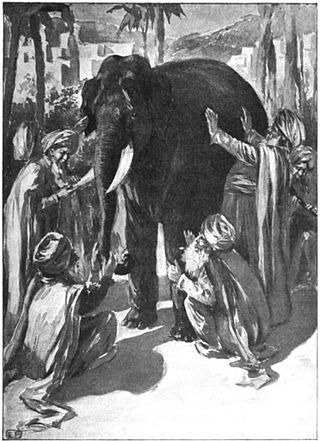
The parable of the blind men and an elephant is a story of a group of blind men who have never come across an elephant before and who learn and imagine what the elephant is like by touching it. Each blind man feels a different part of the elephant's body, but only one part, such as the side or the tusk. They then describe the elephant based on their limited experience and their descriptions of the elephant are different from each other. In some versions, they come to suspect that the other person is dishonest and they come to blows. The moral of the parable is that humans have a tendency to claim absolute truth based on their limited, subjective experience as they ignore other people's limited, subjective experiences which may be equally true. The parable originated in the ancient Indian subcontinent, from where it has been widely diffused.

Tahir Shah is a British author, journalist and documentary maker of Afghan-Indian descent.
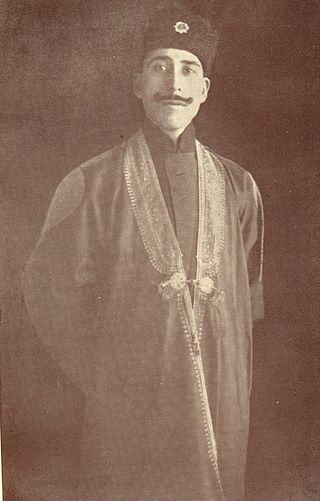
Sirdar Ikbal Ali Shah was an Indian-Afghan author and diplomat descended from the Sadaat of Paghman. Born and educated in India, he came to Britain as a young man to continue his education in Edinburgh, where he married a young Scotswoman.
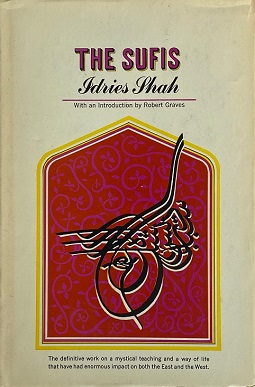
The Sufis is one of the best known books on Sufism by the writer Idries Shah. First published in 1964 with an introduction by Robert Graves, it introduced Sufi ideas to the West in a format acceptable to non-specialists at a time when the study of Sufism had largely become the reserve of Orientalists.
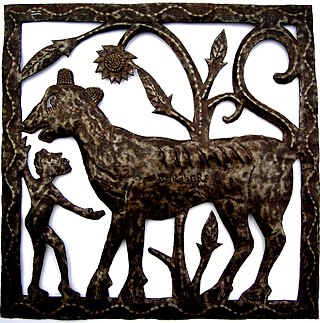
The Tiger, the Brahmin and the Jackal is a popular Indian folklore with a long history and many variants. The earliest record of the folklore was included in the Panchatantra, which dates the story between 200 BCE and 300 CE.

A Perfumed Scorpion is a non-fiction book by the Sufist writer, Idries Shah, that was first published by Octagon Press in 1978, the same year that he published two other major works: Learning How to Learn: Psychology and Spirituality in the Sufi Way and The Hundred Tales of Wisdom. It has since been republished by The Idries Shah Foundation.

The Dermis Probe is a book by Idries Shah published by Octagon Press in 1970. A paperback edition was published in 1989 and again in 1993. The stories presented in the book are also available in an audio format.

The Hundred Tales of Wisdom is a translation from the Persian by Idries Shah of the "Life, Teachings and Miracles of Jalaludin Rumi" from Aflaki's Munaqib, together with certain important stories from Rumi’s own works, traditionally known by that title. It was published by Octagon Press in 1978.

The Commanding Self is a book by the writer Idries Shah first published by Octagon Press in 1994. A paperback edition was published in 1997.

Tales of the Dervishes by Idries Shah was first published in 1967, and re-published and made available online for free by The Idries Shah Foundation in October 2016.

First published in 1971, Thinkers of the East: Studies in Experientialism was one of several books of Eastern practical philosophy study materials selected and arranged by Idries Shah for a contemporary readership.
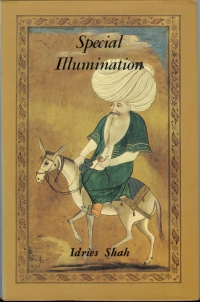
Special Illumination: The Sufi Use Of Humour is a book by the writer Idries Shah published Octagon Press in 1977. Later editions were published in 1983, 1989 and 1997.
Octagon Press was a cross-cultural publishing house based in London, UK. It was founded in 1960 by Sufi teacher, Idries Shah to establish the historical and cultural context for his ideas. The company ceased trading in 2014.
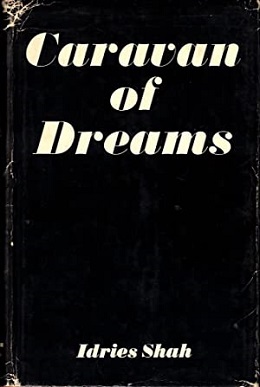
Caravan of Dreams is a book by Idries Shah first published in 1968 by Octagon Press as part of his presentation of traditional Eastern teachings and Sufi ideas for contemporary society. New editions of the book were published in 2015 by The Idries Shah Foundation.

The Pleasantries of the Incredible Mullah Nasrudin is a book by the writer Idries Shah, based on lectures he delivered at the University of Geneva as Visiting Professor in 1972–73. The book is a collection of tales, none more than two pages and almost all less than a page long, about the folkloric character Mulla Nasrudin. Published by Octagon Press in 1968, it was re-released in paperback, ebook and audiobook editions by The Idries Shah Foundation in 2015.

The Institute for Cross-cultural Exchange (ICE) or Institut d'échanges interculturels (IEI) is an educational and cross-cultural non-profit organisation based in Calgary, Alberta, Canada. Administered and staffed entirely by volunteers, ICE promotes children’s literacy and cross-cultural education at home and abroad. It provides at-risk children with their very first books: illustrated and thought-provoking stories from the Middle East and Central Asia.
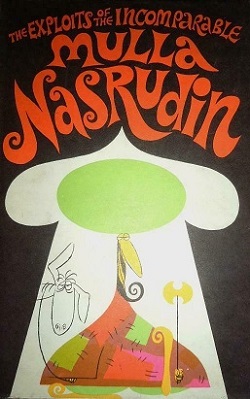
The Exploits of the Incomparable Mulla Nasrudin is a book by the writer Idries Shah, It consists of jokes and anecdotes involving the wise fool of Middle Eastern folklore, Mulla Nasrudin. Published by Octagon Press in 1966, the book was re-released in paperback, ebook and audiobook editions by The Idries Shah Foundation in 2014 and 2015.
References
- 1 2 Doris Lessing (January 31, 1999). "On Sufism and Idries Shah's The Commanding Self (1994)". Sufi Studies Today. Archived from the original on 18 July 2007. Retrieved 20 March 2010.
- ↑ Hardin, Shields Nancy (October 1977). "The Teaching Story and Doris Lessing". Twentieth Century Literature. 23: 314–25. doi:10.2307/441260. JSTOR 441260.
- ↑ from Learning from Stories, A lecture by Idries Shah before a live audience in 1976 available as audio to download at "Idries Shah Lectures Audio". Archived from the original on 2010-03-28. Retrieved 2010-03-21.. Accessed March 20, 2010.
- ↑ Malik, Jamal; Hinnells, John R., eds. (2006). Sufism in the West. London, UK/New York, NY: Routledge Taylor & Francis Group. p. 32. ISBN 0-415-27407-9.
- ↑ On the Teaching Tales page in the misc. writing section of his website, Tahir Shah, son of Idries Shah writes: "More often than not my father would reject requests from people seeking a teacher. He would say: ‘that person only wants a guru’, or ‘this person can’t be taught, because he isn’t ready yet to learn’. Those whom he accepted were directed to Sufi teaching-stories and other writing by the great masters – among them Omar Khayyam, Jalaluddin Rumi, Hakim Sanai, El Ghazali and Saadi of Shiraz."
- ↑ Shah, Idries (1991). World Tales. Octagon Press. p. 336. ISBN 0-86304-036-5.
- ↑ "Robert Ornstein To Speak at Library of Congress on Afghan "Teaching-Stories" and the Brain". Library of Congress. October 16, 2002. Retrieved 17 March 2010.
- ↑ Shah, Idries. "The Teaching Story: Observations on the Folklore of Our "Modern" Thought" . Retrieved 2017-10-03.
- ↑ The Exploits of the Incomparable Mulla Nasrudin, ISBN 0-86304-022-5, The Subtleties of the Inimitable Mulla Nasrudin, ISBN 0-86304-021-7, The Pleasantries of the Incredible Mulla Nasrudin , ISBN 0-86304-023-3 and The World of Nasrudin, ISBN 0-86304-086-1
- ↑ Ranelagh, E.L. (1979). The Past we Share. London, Melbourne, New York: Quartet Books Ltd. p. 165. ISBN 0-7043-2234-X. A cleric here could mean an educated layman as well as an ecclesiastic.